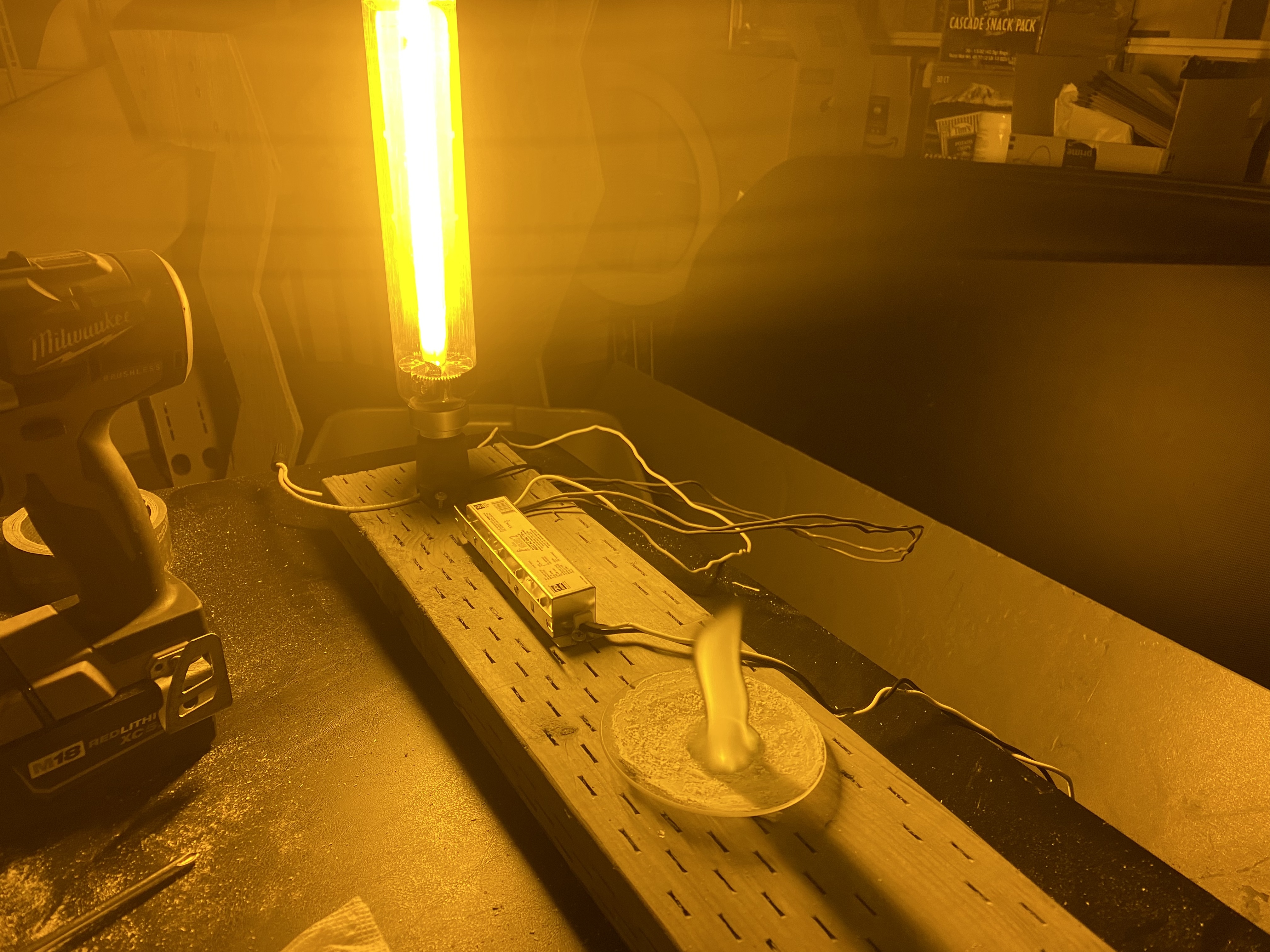So I’m attempting to make a “black flame candle” for a Hocus Pocus movie night this Halloween.
I’m basically going to be filling a spirit lamp with methanol mixed with NaCl and light it under a low pressure sodium vapor light.
The idea is that the sodium ions given off by the flame will perfectly absorb the sodium spectrum given off by the light and appear black.
Early tests showed that this works to a degree. I get a bit of a black rim around the edges of the flame, but it still appears yellow. Any idea why this is happening? The effect appears better the smaller the flame, so it might not be a problem when I get the spirit lamp working (it’s in the mail).
I don’t fully understand this phenomenon, so any explanation is appreciated. Does the brightness of the flame have to be less than the bulb for it to work?
